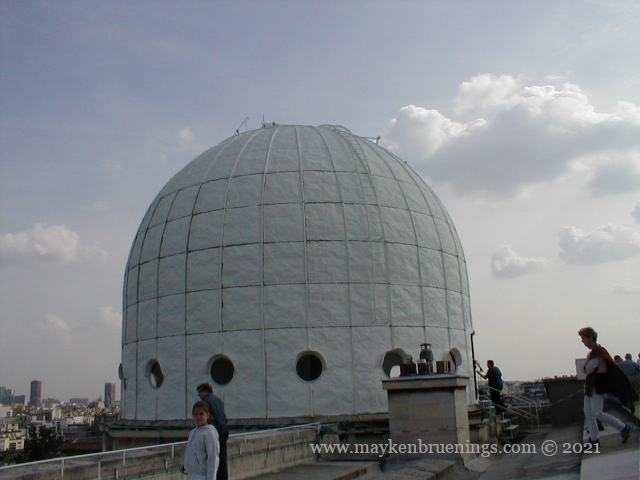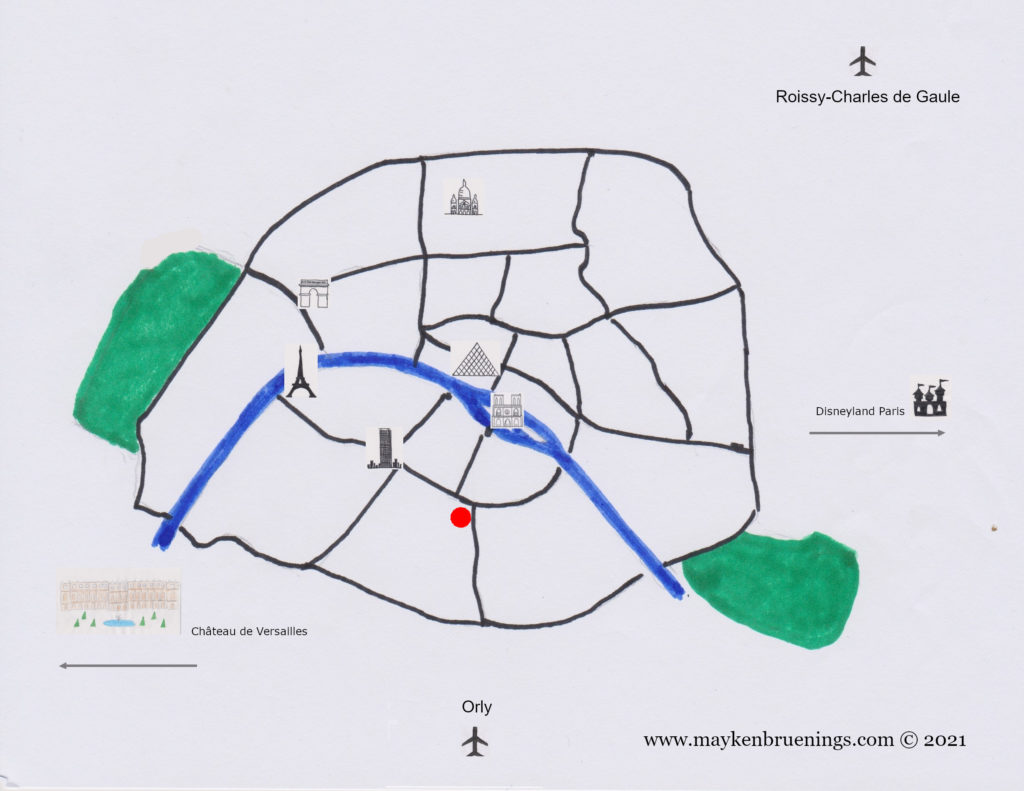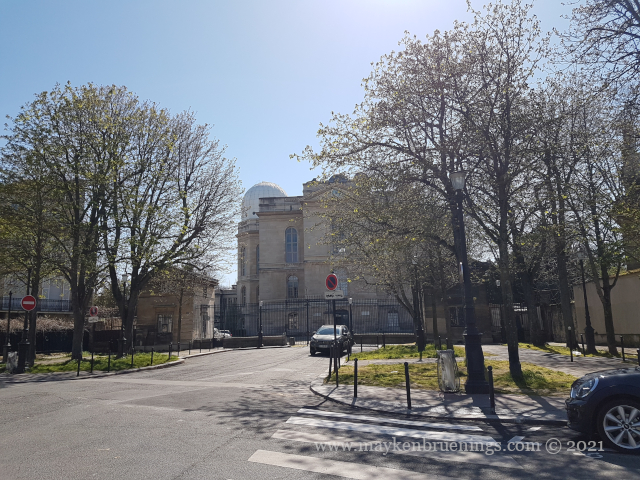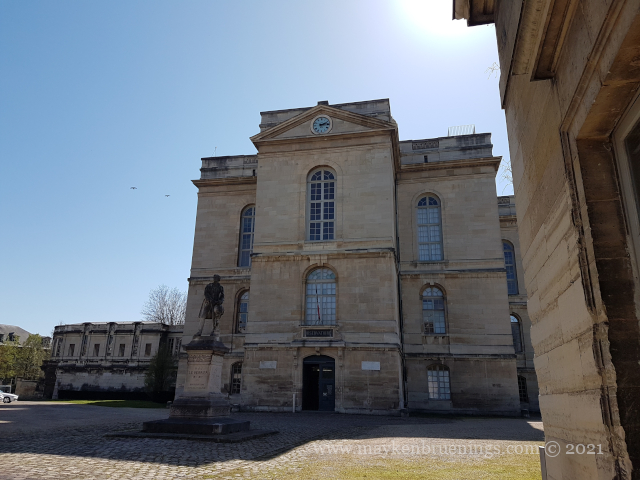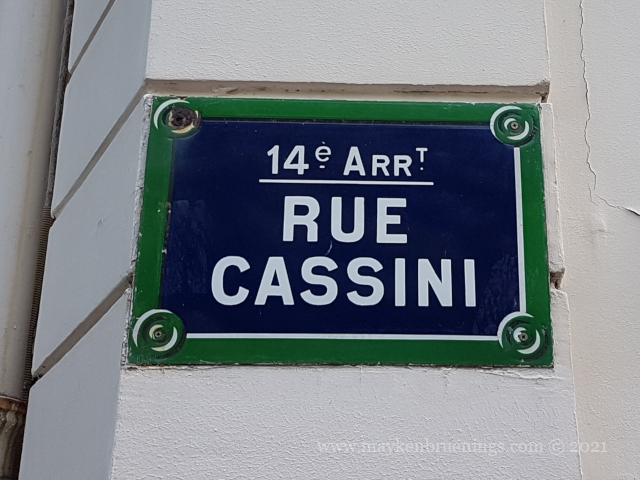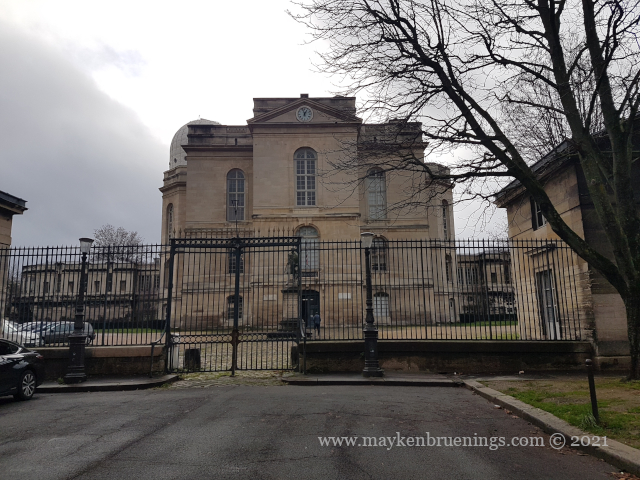The Paris Observatory was founded in 1667 under Sun King Louis XIV and is the oldest observatory in the world still in operation.
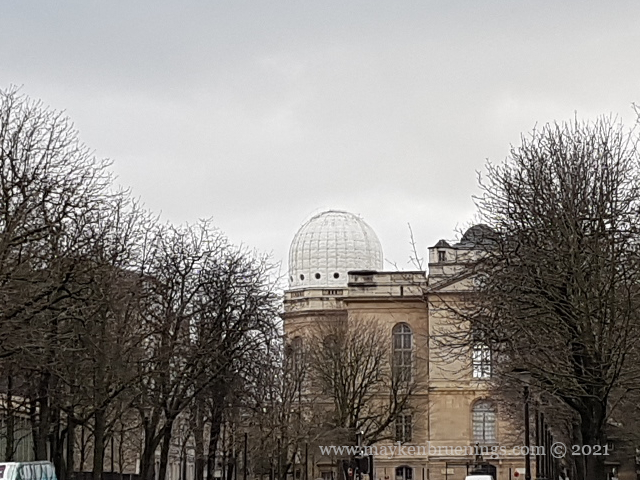
It was to be situated on the Paris Meridian (today at 2°20′ East), which was for a long time in competition with the Greenwich meridian. On Solstice Day 1667, mathematicians traced the lines on the ground where the observatory was to be built. The Paris meridian bisected the site. Today, it is traced on the ground inside the observatory, and the Avenue de l’Observatoire runs along its axis.
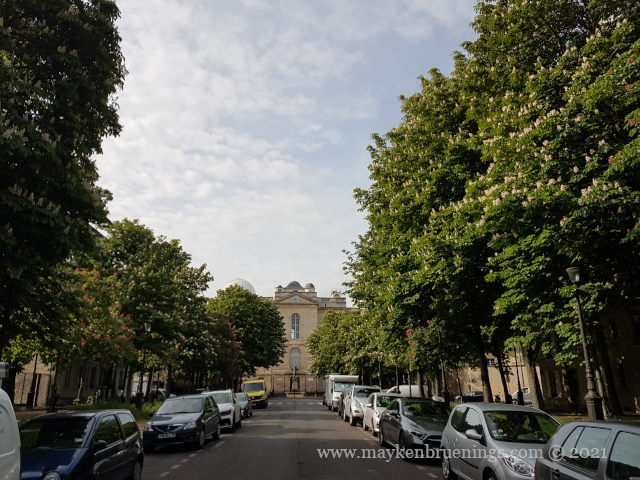
The Paris Meridian can also be traced in the city of Paris by the Arago medallions. 135 originally, some of them have disappeared since 1994. They are named after François Arago, director of the Observatory in the 19th century.
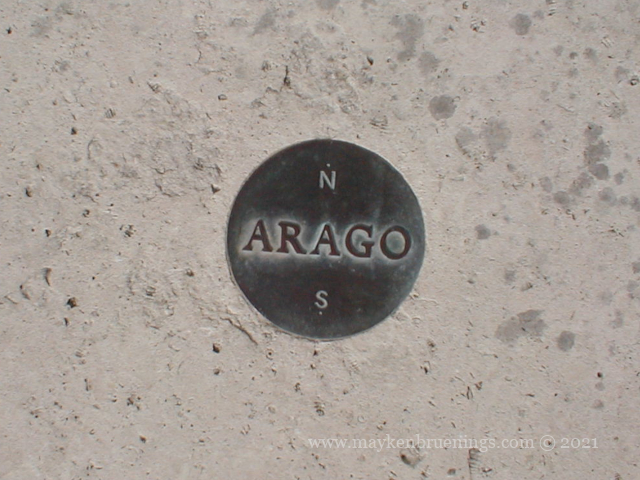
The first directors of the Observatory were four generations of Cassinis: Giovanni Domenico Cassini, Jacques Cassini, César François Cassini de Thury and Jean Dominique Comte de Cassini. They held the office until the French Revolution.
The copula of the observatory houses the Arago telescope. Completed in 1854, it was the biggest of its time, and remained in use for over a hundred years. In the 1880, it conducted photometry measurements of Jupiter’s moons (only four were known at the time, though).
